- News
- Reviews
- Bikes
- Components
- Bar tape & grips
- Bottom brackets
- Brake & gear cables
- Brake & STI levers
- Brake pads & spares
- Brakes
- Cassettes & freewheels
- Chains
- Chainsets & chainrings
- Derailleurs - front
- Derailleurs - rear
- Forks
- Gear levers & shifters
- Groupsets
- Handlebars & extensions
- Headsets
- Hubs
- Inner tubes
- Pedals
- Quick releases & skewers
- Saddles
- Seatposts
- Stems
- Wheels
- Tyres
- Tubeless valves
- Accessories
- Accessories - misc
- Computer mounts
- Bags
- Bar ends
- Bike bags & cases
- Bottle cages
- Bottles
- Cameras
- Car racks
- Child seats
- Computers
- Glasses
- GPS units
- Helmets
- Lights - front
- Lights - rear
- Lights - sets
- Locks
- Mirrors
- Mudguards
- Racks
- Pumps & CO2 inflators
- Puncture kits
- Reflectives
- Smart watches
- Stands and racks
- Trailers
- Clothing
- Health, fitness and nutrition
- Tools and workshop
- Miscellaneous
- Buyers Guides
- Features
- Forum
- Recommends
- Podcast
BUYER'S GUIDE
 Guide to groupsets July 2021
Guide to groupsets July 2021Guide to groupsets: learn why your bike has matching components
A groupset is a collection of matching components used by a bike manufacturer to turn a frame into a bike. But confusingly, the term doesn't cover all the parts on a bike, so let's take a look at what it does cover, and why groupsets exist.
The first groupsets were produced by Italian component maker Campagnolo and just as today, a groupset was a collection of components that matched visually and in quality and function. The shapes of the various cast, forged and machined parts of a groupset all follow similar lines. Often there will be a common colour too, with various shades of grey currently in vogue.
Who makes groupsets?
The big names in bike component manufacturing are Shimano, Campagnolo, and SRAM, and these are the brands you'll see almost exclusively on the groupsets fitted to bikes. In fact, you'll have to look fairly hard to find anything but Shimano, such is the Japanese company's domination of the market. You'll find SRAM groupsets on a few mid-priced bikes, but this American-based company is currently focussing on very high-end bikes with its wireless eTap electronic shifting, and on cyclocross and gravel/adventure bikes with its 1X transmissions that combine a single chainring with a very wide-range sprocket set. Taiwanese/Italian manufacturer FSA has been working on groupsets for some years and launched an electronic system in 2018, but it hasn't been widely adopted.
There used to be more. Mavic made some strikingly-styled groupsets in the 1980s, and we previously wrote about the demise of SunTour of Japan and Zeus of Spain. Sachs, part of the German Mannesman industrial conglomerate, made groupsets in the 1990s before selling its designs and production facilities to SRAM. A few other brands have appeared on groupsets, but usually some of the parts have been rebranded components from other manufacturers. Italian company Miche, for example, used to offer groupsets with rebranded SunTour derailleurs, while Galli, also from Italy, made its own brakes and derailleurs but rebranded other companies' parts for the rest of its groupsets.
Today, each of the big three makes a range of groupsets covering bikes from the entry level up to professional racing. The table at the foot of the page lists them, and gives an idea of the cost of the bikes you'll find them on.
What's in a groupset?
A modern groupset usually comprises brakes, brake/gear levers, chainset, derailleurs, chain and sprockets. That's changed over time, though. For example, there was a time when a groupset included pedals and hubs. Groupset makers still offer hubs and pedals that are designated as part of a group, but it's rare to see them on off-the-peg bikes. Bike makers usually buy complete wheels, sometimes from the groupset manufacturer — Shimano, Campagnolo and SRAM all make wheels — sometimes from another company. Bikes often come with very basic pedals, or none at all. The customer is expected to fit their chosen pedal system. Campagnolo and Shimano used to offer seatposts, Shimano made headsets and handlebar stems, Campagnolo has dabbled in saddles and for a while made highly-regarded rims.
What about the other bits?
A bike's bar, stem, saddle and seatpost will come from a different company than the one supplying the groupset. There's no particular reason for this, except that groupset makers tend to have long-standing specialisation in moving parts and leave the less complicated components alone.
But we're talking about the bike industry so it's Not That Simple. Some manufacturers of non-groupset components have expanded beyond that original remit, notably FSA and Ritchey with headsets, wheels and chainsets. From the other direction, Shimano owns Pro Bike Gear, which makes bars, stems, saddles, seatposts and wheels, plus bags and accessories. You'll need tyres and tubes, but it's otherwise possible to build a completely Shimano/Pro-equipped bike, and you could do the same with FSA if you start with its gear system.
Why have a groupset at all?
We've already touched on two reasons why groupsets exist: matching aesthetics and matching quality. A bike with a complete groupset looks good, because the chainset, brakes, levers and derailleurs will all be the same colour and share other visual features. Perhaps more importantly, the quality of all the parts will be similar, so you can expect them all to be similarly durable. The metal treatments and high-strength alloys that make pivots and bearings more durable and that also make parts lighter are expensive, so better groupsets are pricier. If you ride 10,000 miles per year, the reliability of an expensive groupset is a decent investment; if you're a 2,000 mile-a-year weekend warrior, perhaps not so much.
Materials themselves may delineate groupsets. You won't find any carbon fibre in Campagnolo's entry-level Centaur groupset, but its top-end Super Record groupset is positively dripping with composites, as well as a fair amount of titanium. That use of high-tech materials makes Super Record the lightest groupset on the market, as well as the most expensive.
Another reason is that a bike with a complete groupset almost always works better than one with a mix of parts from different manufacturers. Component makers design their shifters to pull just the right amount of cable for each gear shift or braking action, and their sprockets and chainrings to grab their chains and move them smoothly from one tooth to another. Change almost any component and things won't work quite as well.
That said, some manufacturers are pretty good at making compatible parts. SRAM sprockets work well enough in Shimano transmissions and it's not unusual to find KMC chains on bikes equipped with any of the big three's groupsets. In fact, KMC is widely reported to supply chains to Shimano, so you'd expect its chains to work with Shimano gears. Nevertheless, with rare exceptions, if you want your bike to work as well as it possibly can, then fitting a complete groupset is the way to go.
How many gears?
Aside from weight and durability the main difference between cheaper and more expensive groupsets is the number of gears you get. The latest top-end groupsets have 12 sprockets on the rear hub (and 13 in the case of Campagnolo's Ekar gravel bike groupset), giving a wide range of closely-spaced gears. From the next tier down to the middle of the range, you find 11-speed transmissions.
When it comes to groupsets you'll find on bikes in the shops, Shimano's Tiagra transmission is the only common 10-speed set-up. SRAM's Apex groupset is also 10-speed, but it's practically vanished from off-the-peg bikes.
If your needs are more modest, Shimano is the only game in town, with the 9-speed Sora groupset and 8-speed Claris.
Stopping options
Just a few years ago there was only one way of slowing down a road bike, with brakes that acted on the wheel rims, operated by cables. Since then, disc brakes have become common on bikes from about £1,000 and up. From about £1,500 they use hydraulics to get braking force from lever to brake; below that you'll find conventional cables.
All the major manufacturers now offer groupsets with disc brakes; Campagnolo was the last to come to the party, and aside from the grizzling of a few retrogrouches they're now an accepted part of the bike component universe. While they're a bit heavier than rim brakes, they offer better control, are less affected by the wet and still work if your rim gets damaged or you break a spoke.
The rise and rise of electronic shifting
Component manufacturers have long been intrigued by the idea of using motors to operate derailleurs instead of having the rider yank a cable to make a gear shift. The idea is that shifting can be made faster, more precise and more reliable if you take clumsy human beings out of the process.
Mavic had a couple of attempts at electronic shifting with the Zap and Mektronic systems in the 1990s, and SunTour had a chainset-based system called BEAST (for Browning Electronic Accushift Transmission — Browning was the family of inventors behind the design, AccuShift was SunTour's term for indexed gear systems). All suffered reliability problems. The SunTour/Browning system just didn't like getting wet and muddy, a serious problem for a mountain bike component, while Mavic's systems were a victim of their own ingenious design. The power needed to make the shift happen in a Mavic system came from the movement of the chain, which meant that the batteries and solenoids could be small and light, but the mechanism to take the motion of the jockey wheel and turn it sideways was quite delicate. BEAST, Zap and Mektronic were discontinued and the idea faded away for a few years.
In the mid-2000s prototypes of Campagnolo electronic shifting systems began appearing on pro riders' bikes. Even though these were clearly quite advanced development units — you could see mould marks, indicating that Campagnolo had gone to the expense of making moulds for the composite parts — Campagnolo remained tight-lipped about when they'd actually be on sale.
In 2009, Shimano became the first of the major groupset makers to actually offer an electronic-shifting system for road bikes with the Dura-Ace Di2 system, though Shimano registered the 'Di2' trademark in 2000 and offered electronic Nexave rear mechs for hybrid bikes in the early 2000s.
Dura-Ace Di2 was rapidly followed by Ultegra Di2, and Campagnolo finally unveiled Record EPS in 2012. SRAM responded with eTap ditching the wires between shifters and derailleurs which makes installation incredibly easy at the expense of slightly slower shifts compared to Shimano.
More than a decade after Dura-Ace Di2, electronic shifting is clearly here to stay and has proven functional and reliable.
What's the future of groupsets?
The barrier to entering the groupset market is high. Most of the customers are bike manufacturers with well-established relationships with their existing suppliers. You need substantial amounts of heavy machinery for the forging, casting, stamping and moulding processes that convert raw metal to bike parts, and either robots or inexpensive labour to assemble them.
As a result, nobody enters the field with a complete groupset. The trick is to get started with a part that's better than what's already available, or at least very different from it. SRAM did this with its throttle-style gear shifter GripShift, and expanded by buying other companies like Sachs (derailleurs), Avid (brakes) and Truvativ (chainsets).
FSA hasn't made the inroads we expected when prototypes of an FSA electronic gear system, dubbed K-Force WE appeared on the bike of top Italian rider Ivan Basso at the 2016 Tour de France. A few weeks later FSA showed off the new shifters at the Eurobike show and our Dave Arthur was able to take it for a spin.
We tested K-Force WE when it finally became available and found it had some way to go to catch up with the electronic groupsets from Shimano, Campagnolo and SRAM. Since then it looks like FSA has squashed some of the bugs. In August 2019, Angel Madrazo Ruiz of the BH-Burgos team won a stage of the Vuelta a Espana using K-Force WE, but it's still incredibly unusual to find K-Force WE on an off-the-peg bike.
The reason it took so long for FSA to get a groupset out is probably that decent-quality road bikes now all have combined gear and brake levers. There are only so many ways to do this and they're all covered by patents held by Shimano, SRAM and Campagnolo. However, Shimano introduced its STI brake/shift levers in 1990, so its patents on that design should now have expired. That we've not seen copies yet is testament to Shimano's technical expertise in getting a quite delicate mechanism to work reliably.
Similarly Rotor started out making cranks and chainrings and their signature product is still the elliptical chainring, claimed to smooth out a rider's power delivery. They also offer an innovative hydraulically-actuated 13-speed gear system, along with hydraulic disc brakes, so can claim to be a groupset manufacturer. Again, though you won't find Rotor compoents on off-the-peg bikes
The trend over the last few years has been to ever-greater integration between parts, and that will continue. In the days before indexed shifting you could use a Campagnolo derailleur with Shimano gear levers (though Campagnolo derailleurs of that era shifted so badly it's a mystery why you'd want to). You can't do that now and be certain the indexing will work properly, nor should you use Shimano levers with Campagnolo brakes — they have different cable pull requirements. And you definitely can't use SRAM hydraulic brakes with Shimano levers because they use different, totally incompatible hydraulic fluids.
As for what the future might bring, imagine a system that senses that you're braking and changes gear for you. That would require a level of integration beyond the current state of the art. Or how about a seatpost that automatically adjusts your saddle height within a range: lower for descending, higher for climbing? Or how about an electronic system that talks to your power meter and keeps you in the necessary gear to put out your target power for a training session? To be honest, we're amazed you can't actually buy that last one yet.
Read more: Your complete guide to SRAM road bike groupsets
Read more: Your complete guide to Campagnolo road bike groupsets
Read more: Your complete guide to Shimano road bike groupsets
Know your groupsets
The table below lists the groupsets currently offered by Shimano, SRAM and Campagnolo, along with the recommended retail price of a complete set of each one, derived by simply adding up the RRPs of the individual parts. You'll almost always be able to find them for less than RRP, but the prices give you an index of the relative quality of each groupset.
We've also listed the approximate price range of bikes with each group. We have to stress these ranges are very approximate. Some groupsets — especially those from Campagnolo, and non-AXS SRAM groupsets — are very uncommon on off-the-peg bikes. It's also now hard to find high-end bikes equipped with rim brakes.
| Groupset RRP | Approximate bike price range | |
|---|---|---|
| Shimano | ||
| Dura-Ace 9150 Di2 rim brake | £3,040 | £4,250-£9,500 |
| Dura-Ace 9170 Di2 disc brake | £3,255 | £5,000-£11,000 |
| Dura-Ace 9100 rim brake | £1,880 | £3,500-£7.300 |
| Dura-Ace 9120 disc brake | £2,040 | £5,000-£8,000 |
| Ultegra R8050 Di2 rim brake | £1,575 | £2,350-£6,000 |
| Ultegra R8070 Di2 disc brake | £2,005 | £3,000-£6,500 |
| Ultegra R8000 rim brake | £1,171 | £1,500-£3,700 |
| Ultegra R8020 disc brake | £1,446 | £2,250-£5,200 |
| 105 R7000 rim brake | £797 | £1,000-£2,550 |
| 105 R7000 disc brake | £1,086 | £850-£2,000 |
| Tiagra 4700 rim brake | £509 | £800-£1,800 |
| Tiagra 4700 disc brake | £548 | £900-£1,800 |
| Sora R3000 rim brake | £447 | £525-£1,300 |
| Claris rim brake | £392 | £420-£800 |
| GRX RX800 Di2 disc brake | £1,530 | £4,000-£6,000 |
| GRX RX800 disc brake | £1,190 | £1,600-£4,200 |
| GRX RX600 disc brake | £906 | £1,300-£3,300 |
| GRX RX400 disc brake | £735 | £1,300-£1,500 |
| Campagnolo | ||
| Super Record EPS 12x2 rim brake | £3,660 | from around £10,000 |
| Super Record EPS 12x2 disc brake | £3,950 | from around £10,200 |
| Super Record 12x2 rim brake | £3,124 | from around £8,500 |
| Super Record 12x2 disc brake | £3,380 | from around £8,700 |
| Record 12x2 rim brake | £1,990 | £5,000-£6,800 |
| Record 12x2 disc brake | £2,120 | £5,000-£6,800 |
| Chorus 12x2 rim brake | £1,200 | £3,000-£5,000 |
| Chorus 12x2 disc brake | £1,600 | £3,400-£5,500 |
| Centaur Silver rim brake | £675 | £1,300-£2,500 |
| Centaur Black rim brake | £640 | £1,300-£2,500 |
| Ekar 13 disc brake | £1,538 | £3,000-£7,250 |
| SRAM | ||
| Red eTap AXS rim brake | £3,159 | £5,300-£10,000 |
| Red eTap AXS disc brake | £3,349 | £6,000-£13,200 |
| Red 22 rim brake | £1,886 | NA |
| Red 22 disc brake | £2,052 | NA |
| Force eTap AXS rim brake | £1,400 | NA |
| Force eTap AXS disc brake | £1,604 | £3,000-£9,000 |
| Force 22 rim brake | £1,024 | £1,200-£1,700 |
| Force 22 disc brake | £1,209 | from ~£1,500 |
| Force 1 disc brake | £888 | £2,200-£5,200 |
| Rival eTap AXS disc brake | £1,264 | £2,700-£7,450 |
| Rival 22 rim brake | £708 | £1,000-£2,000 |
| Rival 22 disc brake | £999 | from ~£1,300 |
| Rival 1 1 disc brake | £1,011 | £1,300-£2,300 |
| Apex 10 rim brake | £617 | £1,400-£1,700 |
| Apex 1 disc brake | £834 | NA |
About road.cc Buyer's Guides
The aim of road.cc buyer's guides is to give you the most, authoritative, objective and up-to-date buying advice. We continuously update and republish our guides, checking prices, availability and looking for the best deals.
Our guides include links to websites where you can buy the featured products. Like most sites we make a small amount of money if you buy something after clicking on one of those links. We want you to be happy with what you buy, so we only include a product if we think it's one of the best of its kind.
As far as possible that means recommending equipment that we have actually reviewed, but we also include products that are popular, highly-regarded benchmarks in their categories.
Here's some more information on how road.cc makes money.
You can also find further guides on our sister sites off.road.cc and ebiketips.
road.cc buyer's guides are maintained by the road.cc tech team. Email us with comments, corrections or queries.
John has been writing about bikes and cycling for over 30 years since discovering that people were mug enough to pay him for it rather than expecting him to do an honest day's work.
He was heavily involved in the mountain bike boom of the late 1980s as a racer, team manager and race promoter, and that led to writing for Mountain Biking UK magazine shortly after its inception. He got the gig by phoning up the editor and telling him the magazine was rubbish and he could do better. Rather than telling him to get lost, MBUK editor Tym Manley called John’s bluff and the rest is history.
Since then he has worked on MTB Pro magazine and was editor of Maximum Mountain Bike and Australian Mountain Bike magazines, before switching to the web in 2000 to work for CyclingNews.com. Along with road.cc founder Tony Farrelly, John was on the launch team for BikeRadar.com and subsequently became editor in chief of Future Publishing’s group of cycling magazines and websites, including Cycling Plus, MBUK, What Mountain Bike and Procycling.
John has also written for Cyclist magazine, edited the BikeMagic website and was founding editor of TotalWomensCycling.com before handing over to someone far more representative of the site's main audience.
He joined road.cc in 2013. He lives in Cambridge where the lack of hills is more than made up for by the headwinds.
Latest Comments
- BikingBud 10 min 59 sec ago
Absolutely this, riders gonna crash it is a race. And tempering any aspect of that competitiveness would detract from the race but developing...
- Steve K 50 min 56 sec ago
I'd be very interested to see the venn diagram of people who are currently complaining about Motability and people who pray in aid disabled people...
- Capt Sisko 1 hour 10 min ago
One of the reasons I like Torq products is because they do not use Sortbitol as a sweetener. As those that are sensitive to Sorbital will know, and...
- webbierwrex 1 hour 31 min ago
I came to say the opposite, I always liked Giro shoes but they're insanely narrow. I hope they did change the fit.
- Aluminium can 6 hours 21 min ago
Frame weight is about a hundred grams less than a CAAD 12 disc, which can be picked up cheap these days on gumtree. Heck, get the CAAD12 non disc...
- Dnnnnnn 10 hours 14 min ago
You're too kind. They just seem to be unpleasant trolls.
- Jogle 11 hours 9 min ago
And in Southampton today we had another example of those entitled ambulances going through red lights without a care for anyone else!...
- TheBillder 12 hours 24 min ago
The spokes and nipples are not anodised for environmental reasons, but the rims are. Which is a lot more metal. Hmm...
- Rendel Harris 13 hours 3 min ago
I'm afraid so, anything operated by TfL apart from the Woolwich ferry and the Silvertown Tunnel bike bus when it opens next month.
- chrisonabike 13 hours 45 min ago
That's a bit hard on the cat...

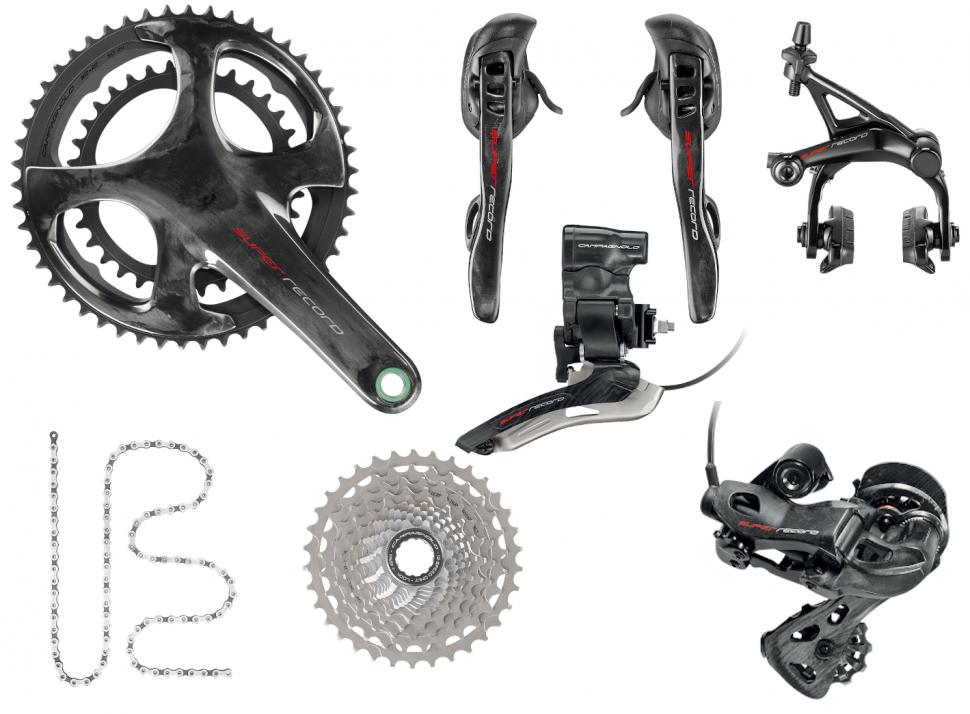
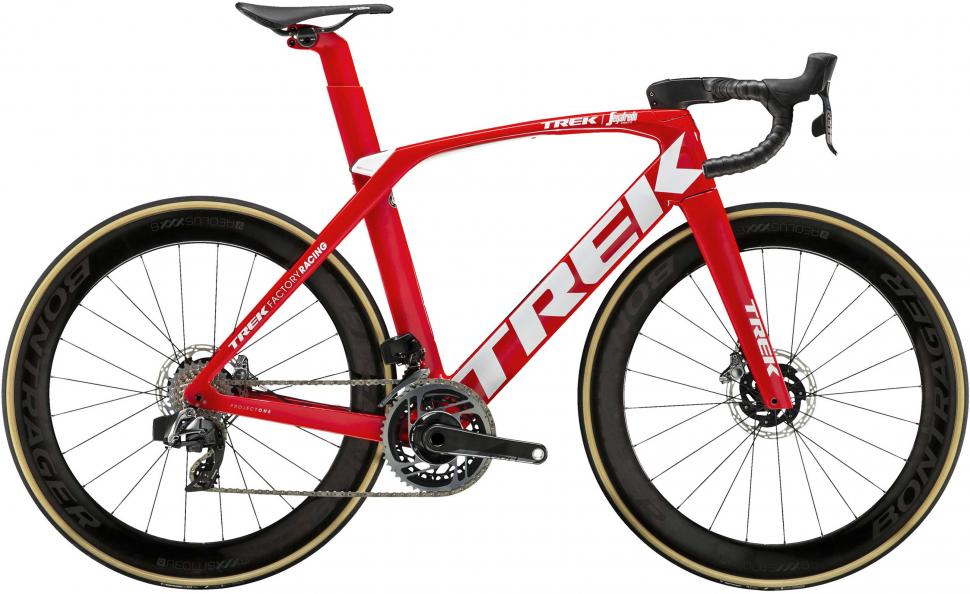
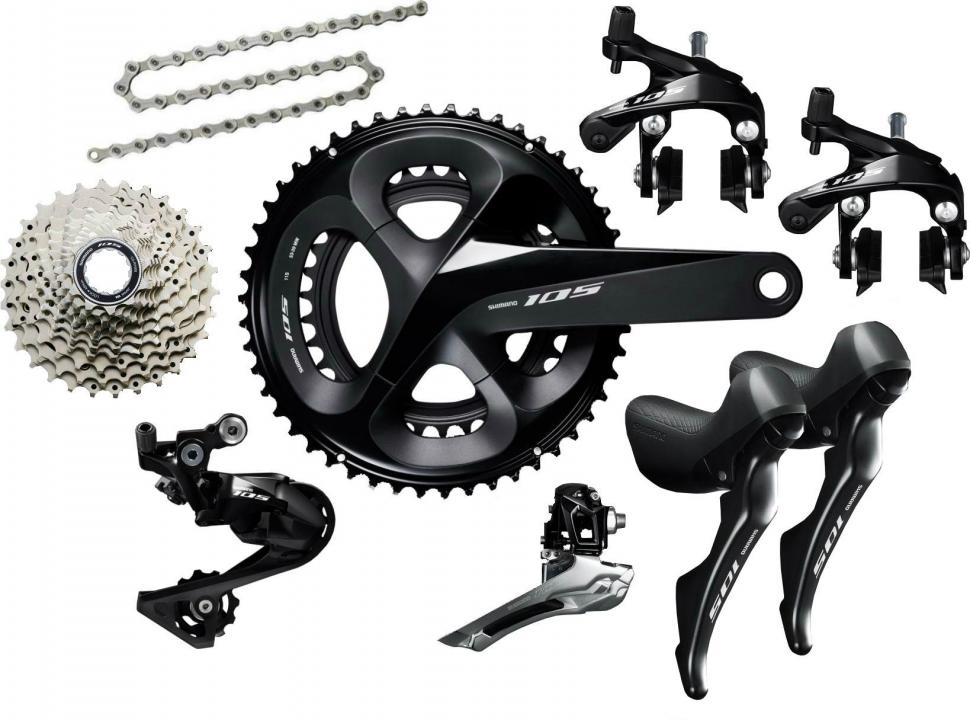
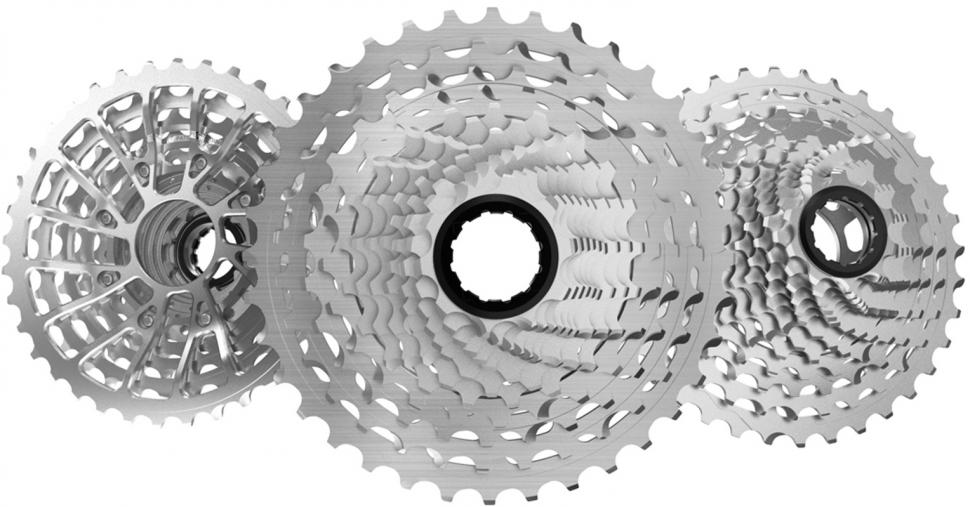

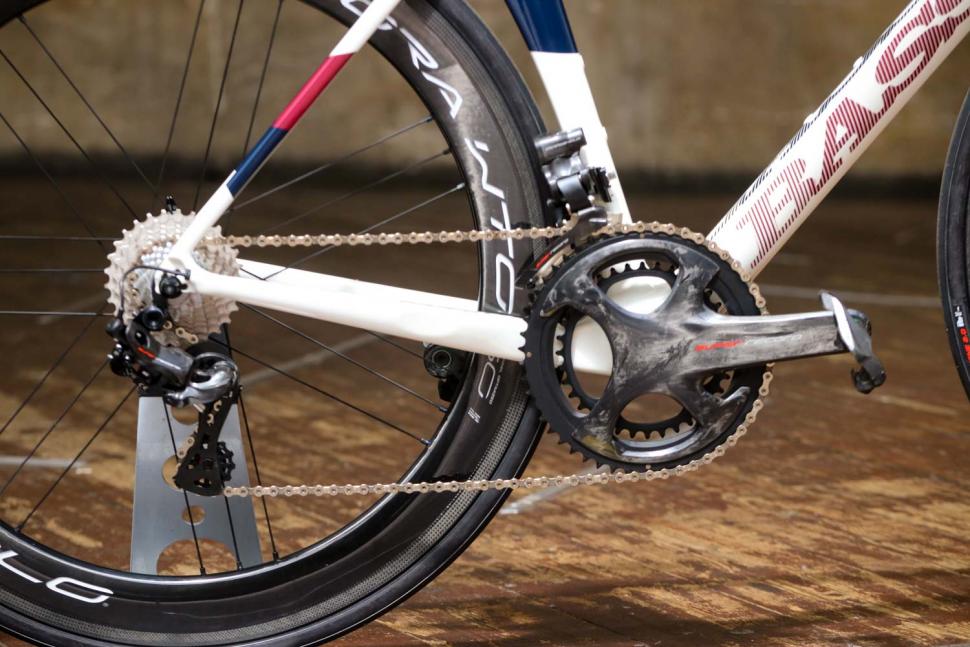

Add new comment
2 comments
Suntour got their brakes from Dia Compe who copied them from Campy.
"....A bike with a complete groupset looks good, because the chainset, brakes, levers and derailleurs will all be the same colour and share other visual features....."
What - they dont already all come in black, grey or silver?